There is so much out here on the internet about wardrobe capsules.
When I started writing about them six years ago, it wasn’t something that people talked much about. Now, they are everywhere and there are hundreds (if not thousands) of blog posts giving advice on how to create your ideal capsule.
But what I notice, is that so many of these capsules really aren’t capsules.
They are 30-50 garments (basically a decent sized wardrobe) that don’t all work together. That’s not a wardrobe capsule.
What Really is a Wardrobe Capsule?
A capsule is a small number of garments – say 10-15 – that work together, that can be worn in a myriad of ways (like I explained in this video on how to pack 72 outfits into your carry on luggage) and of course they are ideal for travel.
Very few of us want to live with just one wardrobe capsule in our life. But if you are building a wardrobe from ground zero, need to create a maternity wardrobe capsule, planning on doing lots of travelling, or really just like the idea of having a really versatile mix-and-match wardrobe then they are an ideal starting place.
Most of us need a number of wardrobe capsules in our wardrobes. We may need them for work, home, social events, for different seasons (if we live in a seasonal environment which has a distinctly different summer from winter).
One capsule does not suit all occassions.
5 Excellent Reasons to Build a Capsule Wardrobe
- You Want to Keep it Simple. You enjoy owning very few clothes. You want to own little, but you need everything to be versatile to give you the greatest number of outfit options out of the least number of garments. You’ve not got much space and you like the simple, uncluttered life.
- You’re Starting Again. You have to rebuild your wardrobe from scratch. Maybe you’ve lost or gained weight, are pregnant or have just worn out all your old clothes and you need to build a new wardrobe from scratch. Then starting with the capsule concept will ensure that you build a cohesive and relevant wardrobe that’s versatile and gives you lots of great options. You’ll be buying with a plan!
- You’re On the Road, Train, Bike or Plane. You are travelling (or planning on travelling). Having a great wardrobe capsule that you can use for travel will ensure that you can carry less and still have many options of outfits to enjoy whilst on your travels.
- You Want Versatility. You have a variety of personal styles. You are more eclectic and enjoy mixing it up. Say you have a boho style for the weekend, a business wardrobe for work, and a smart wardrobe for various events and casual Friday. Rather than build one wardrobe capsule, you may build one or more capsules around each personal style and lifestyle need. Creating capsules for each personality style ensures that you can put a variety of outfits together, vs just purchasing and wearing one-outfit garments. Much better cost-per-wear!
- You’d Love a Uniform. You love the idea of a uniform. Capsules work best for those who like to get up and dressed without having to think and are happy rotating through the same clothes frequently (read up more about this and whether or not it’s you here). They enjoy a look and more of a ‘uniform’ style of dress (even if it is a uniform of their own). A capsule makes this easy. And you don’t have to just have one capsule, you can enjoy a variety of capsules for different areas of your life and activities.
How to Organise Your Wardrobe?
There are so many different ways to organize your wardrobe that there is no one right way. You need to consider what works for you and your organizational skills and preferences, including your space requirements. Do you prefer to have all your items visible and displayed or would you prefer a streamlined look, where items are hidden in drawers and behind closed doors?
1. Organizing by Outfits
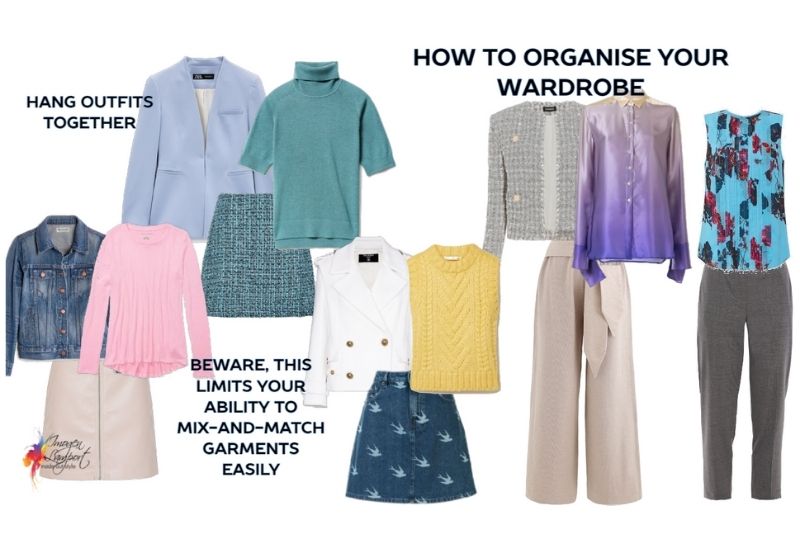
Organizing by outfits is where you hang the whole outfit together, so they are ready to pull out the closet as a ready-to-wear outfit to save time each morning. This system is quick but it isn’t very versatile as it removes items out of rotation and you can’t wear those pieces in other outfits. When your closet is arranged by outfit it can be hard to mix-and-match what you already own and discover new ways to make your wardrobe work.
It’s important to take the time to organize your clothes into wearable outfits. You might stumble on combinations you didn’t think of before and turn your items into a new look. If you have large wardrobe where you can create several weeks of outfits without repeating any garments then spend a few hours one day trying on creating lots of different outfits and hanging them together to make it easier to dress and go.
I recommend photographing outfit combinations so you know exactly what goes together so if something changes, you can go through your album in the morning and pick a different outfit. I like to start with a hero piece – it could be a jacket or a patterned garment, then see just how many different ways I can style it with other existing pieces for different moods and occasions. I describe this in my free eBook5 Step Formula for a Fabulous Wardrobe on a Budget– which if you haven’t got you can sign up for it and download here.
Even if you choose to organize your wardrobe differently, playing in your wardrobe; creating outfits and photographing them is a great idea. You can print them out or keep them as an album on your phone and arrange them by season.
If you don’t have the time or can’t be bothered to get in your wardrobe and create all the outfits first, then document your outfits each day with a simple outfit photo in the mirror. That small investment of time each day will make it faster and easier for you to get dressed stylishly every day without too much thought, especially when you are looking for an outfit and you’ve got limited time to think about what wear. Hate taking photos? Here are my tips on how to pose for photographs to help!
You may also want to start using a wardrobe app to help you remember what’s inside your wardrobe; get some tips on the different apps available here.
By playing in your wardrobe, you’ll also identify any wardrobe gaps needed to complete outfits.
2. Organize by Garment Type
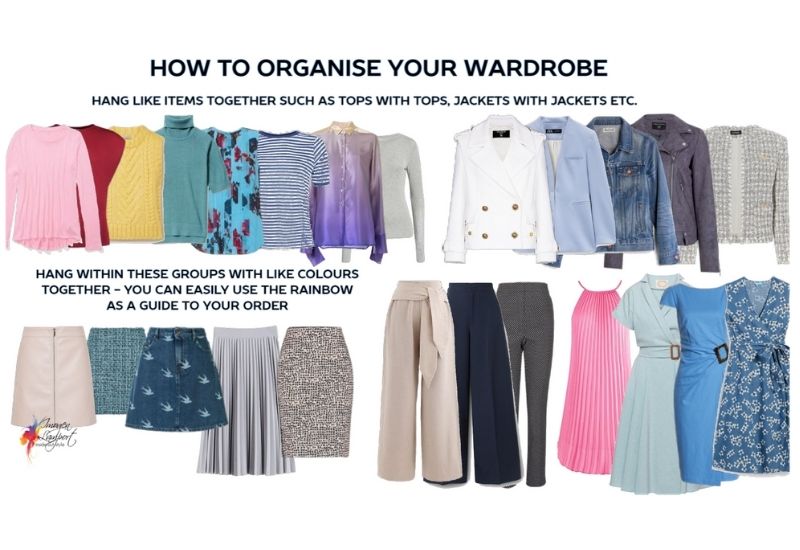
If you don’t want to hang your wardrobe by outfit then I would suggest you create sections in your wardrobe for different sorts of garments – tops, skirts, trousers etc.
The final look of this type of organizing will depend on your wardrobe layout. A wardrobe with lots of cubby holes will be organized very differently to a wardrobe with one long hanging rail. Working in groups of items will help you figure out how much space you need and the best way to store each type of item.
Reserve the most accessible area of your wardrobe for clothes you wear most often. Out-of-season clothes, garments you only wear a few times a year, such as Halloween costumes and formal wear should be stored toward the back and on the upper shelves (or even under the bed if you have limited wardrobe space)
Within each section, I like to organize by colour making it easy to find specific garments. I start at white and work my way through to black via the rainbow (red / pink / orange / yellow / green / blue / violet / brown / grey / black). With patterns, put it into the colour section of the most dominant colour in the pattern. Ordering your clothes in type and colour is the easiest way to start to see more outfit options as you can take a coloured or patterned item and find all the other pieces that go with it easily.
I hang my necklaces by colour using lots of cup hooks so I can easily find ones that related to the colours I’m wearing. If it’s easy to find coordinated accessories and organize them, then you will take the time to wear them (or wear a greater range of them). Here are a few of the best storage ideas I’ve found for accessories.
I’m not the person to keep their shoes in their shoeboxes. I can’t be bothered placing the shoes back in their shoebox but I do have a shoe drawers from Ikea. I can lay my shoes out in an orderly fashion and it’s not difficult to put them away. If you have a lot of shoes in boxes, sticking a pictures of the shoes to the outside of the box will help you identify which shoes are in which box, saving you precious time.
If you want to see the inside of my wardrobe and how I organise you can check it out here.
What is important is that you figure out a way of storing your items so they are easy to access and that keeps them in some sort of order so it’s easier for you to get dressed.
Where do You Start in Building a New and Stylish Wardrobe?
Start with a plan. You may already have a few items that are the basis for your capsules. Download my printable guide to creating wardrobe capsules to give you an easy to follow format for an effective capsule.
Then note into the plan what you have and what you need. This will assist you in making a shopping list of items to look out for that will help you create an effective capsule that all works together (and that’s the key).
1. Do you start with the heroes or start with the basics?
When I’m in a wardrobe and I’m helping someone create new outfits, I start with a hero and look for which basics work with it to create a variety of different outfits.
This is where a colour palette is so useful, as you’ll want to build your wardrobe around colours that flatter, plus when you’re choosing new items using this palette, you’ll find that you easily find many ways of putting together different pieces as the colours work harmoniously together easily as they have colour properties that align. This makes creating a wardrobe capsule really easy.
Build outfits around a hero – this hero skirt is in my palette of colours and I’ve built the outfit around the colours in this skirt.
Once you’ve worked with one hero and the basics you own (try downloading my wardrobe capsule guide to help you find all your possible outfit options), then take a second hero garment and do the same again, using your existing basics.
This process will assist you in discovering your gaps and holes, the things you need to shop for, to build your wardrobe.
2. What do you love?
A more organic way of creating a wardrobe can revolve around this question.
What do you love?
Find pieces that you love (and don’t buy “it’ll do” items as you’re building your wardrobe), and then use these to create outfits around.
You may find that you just create a series of outfits (rather than a wardrobe capsule) if you work with this concept.
3. Does it bring you joy?
Your basics need to still give you some joy (I’ve talked about the concept of interesting basics before here). Even your basics need to be garments you enjoy wearing, so don’t settle for not quite right.
Look at your existing favourite items (basics or heroes) and note down what you love about them. This information can really help you make better purchasing decisions for anything new that you bring into your wardrobe.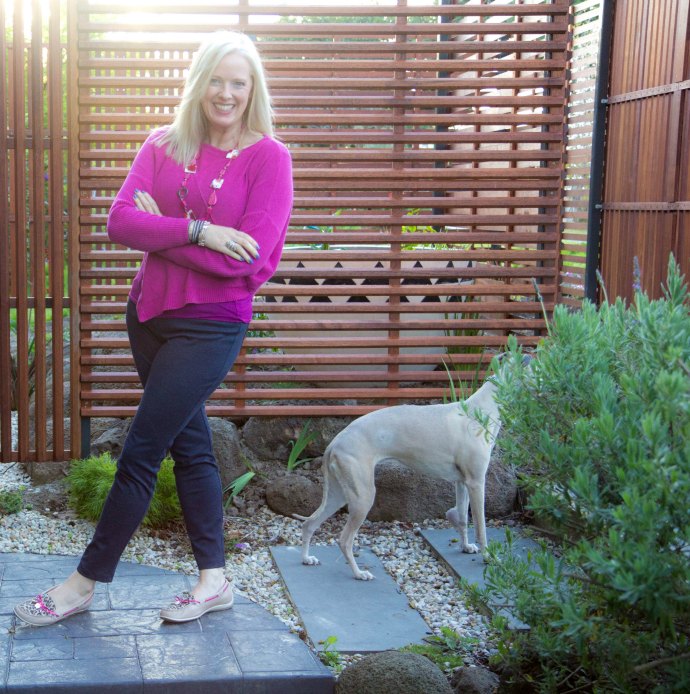
4. Have an understanding of how your wardrobe works together
No piece in your wardrobe exists in a vacuum. How does each piece work in the collective of your wardrobe as a whole? This is part of the value of knowing your ideal colour palette (as immediately you’ll see your wardrobe is harmonious in its colours working easily together – and if you’re not sure of your colours – you can find out with my 7 Steps to Style program).
Have you thought of creating a style book of your favourite items or using a style or wardrobing app that can help you see how all your existing pieces work and how they can work together?
Doing this can help you see what they have in common – such as details in construction, colours, shapes or elements of design.
Choose a Colour Palette for your Capsule Wardrobe
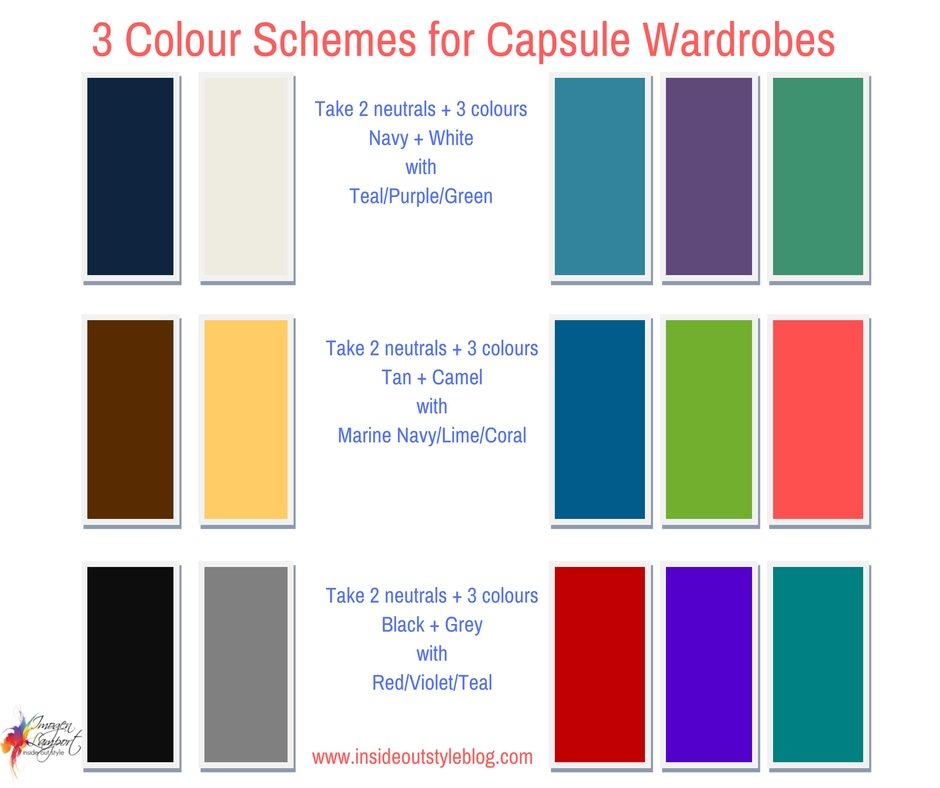
Finding a palette of colours that work together easily is the best way of starting off your process.
You can choose a palette from your colour swatch (if you have had a colour analysis) or just choose a range of colours that work well together (get some tips from this blog post on the subject).
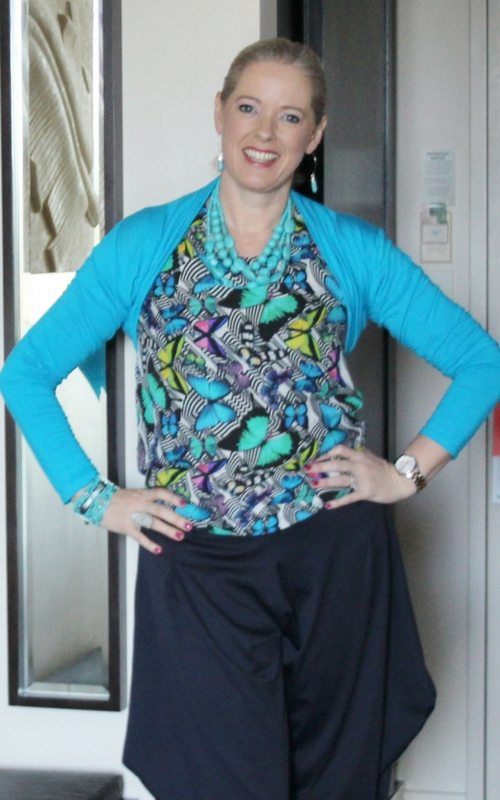
For me – turquoise is a great staple in my capsule wardrobes as it works with so many other colours. On a recent trip this butterfly top helped me create a capsule around the colours within it so I had an easy mix and match range of options.
How Do You Plan a Colour Scheme for a Wardrobe Capsule?
1. Start with Your Hair Colour
The first place to start when choosing the neutrals to base your wardrobe capsule around is with your hair colour. You can choose 1 or 2 neutrals that are within your hair. If you have multi-tonal hair, like many greying heads, or if you have highlights and lowlights, these are a great place to start as they will work well with you!
- So, if you have black hair choose black.
- Brown hair, choose a similar shade of brown.
- Red hair, choose a cognac or tan that is similar to your version of red.
- Blonde? Find the kind of neutral that relates well to your hair colour.
Simple!
2. Look Into Your Eyes
Another place to find good neutrals is to repeat colours that are within your eyes.
If you have blue eyes, you will find the softer grey blues, and navy shades can be a perfect choice. Green eyes? If they are warm look for olives in both lighter and darker shades. Brown eyes may be more bronzed, more burgundy or more golden, check yours our and find brown tones that are similar and will provide a perfect backdrop to your colours.
Then repeat your eye colour in a variety of garments as well – though the more colourful, less neutral versions of these colours.
3. What Are Your Skin and Lip Enhancers?
Skin and lip enhancers are contained in your skin and lips (ergo the name). These may be shades of orange, coral, pinks, reds, burgundy and even red-violets, depending on your skin (you’d be amazed at the variety of different colours you see in people’s skin and lips).
If you have a warm undertone choose the warmer tones of orange, pink, coral, red and burgundy. And of course, if you’re cool, the cooler pinks, reds and plums are going to make you look healthy and alive.
4. Build Your Capsule Colours Around a Patterned Garment
Now if you want to get tricky, look for a garment in a pattern you love that has at least two of your signature colours (hair, eyes, skin, lip enhancers) in it, and then start building a capsule around the colours within that patterned garment.
Here are four examples using patterned skirts as the basis for the colour scheme, let’s look at them from left to right:
- Far left, this would suit someone with cool colouring and dark brown to black hair, fair skin and blue or brown eyes.
- 2nd left, will suit someone with warm light colouring golden blonde hair, and turquoise blue eyes.
- 2nd from the right, will suit someone with warm dark brown/black hair, and fair skin
- Far right, will suit someone with warm medium-light blonde or greying hair and brown or blue eyes
It’s important to remember when building a capsule, that the colours of the tops don’t necessarily need to go together as you are unlikely to wear them at the same time. The tops need to work with the bottoms, and the outer layers (cardigans/jackets/coats) for maximum versatility.
5. Wardrobe Capsule Colour Scheme Examples
I’ve put together a couple of capsules, one warm and one cool to show you more about the process of building your capsule around your colours and also using patterns as often people feel they can’t use patterns in their capsules.
6. Wardrobe Capsule for Warm Green Eyes and Mid-Brown Hair
There are a plethora of greens in this capsule as you will always find that there are are multiple different shades of green within your eyes and can therefore select a few and are a great place around which to build your capsule. I’ve chosen two green based skirts with patterns, one tweedy that has a light blue and yellow fleck through it, the other the pineapple skirt. From there I’ve found a skin enhancing top in orange, a yellow top that works well in colour with both skirts and a warm blue top that’s colour is within the tweed.
I’ve also chosen two jackets, one in the olive green (eye) and the other in a brown that would be a hair enhancer, which is a great colour for shoes, coats, bags and belts too.
Then I’ve selected a variety of accessories, these don’t need to work with every piece, and you can add more interest, pattern and colour into your capsule if you choose using your accessories.
7. Wardrobe Capsule for Cool Blue Eyes and Grey Hair
Here in this capsule for someone who is grey or greying and has a cool undertone, with blue eyes I’ve made this selection.
As blue is a signature colour, I’ve repeated this in a number of ways through the capsule, blue jeans, blue and teal tops, blue pants and a denim jacket, plus a floral chiffon top with a blue background.
Then I’ve repeated the most likely multi-tonal grey hair colour (most grey heads are not just one hair colour but is many lighter and darker shades of grey) which is why I’ve chosen grey background patterned skirts – one plaid and one snakeskin with a range of lighter and darker greys. The grey trousers are also a tweed which gives them a harmonising multi-tonal effect too. Then I”ve repeated that grey in patterned grey shoes (as when you pop on a shoe in your hair colour, it creates a top-and-tail (bookend) effect that is very pleasing aesthetically.
The other tops come in skin and lip enhancing pinks and reds, plus a range of scarves and accessories that pull colours from this capsule and relate to these items.
8. Using Your Colour Palette
If you have a colour palette from a personal colour analysis, the first colours to look for are your signature colours (hopefully these have been marked for you), these will be your eye, hair and skin/lip enhancers, along with some intensifiers (these are often colours that are complementary on the colour wheel and make the colour pop – so a chartreuse green that makes your red hair look brighter for example).
If you have your signatures this makes following this guide super easy (like it’s seriously almost done for you). If you don’t have signatures marked, go through your colour palette whilst looking in a mirror in great natural lighting, and pick out the colours you see in the palette that are contained in your skin, lips, eyes and hair – these are your signatures. Here are more tips on finding your signature colours.
Because the colours within a colour palette are designed to work well together because they have the same colour properties,
If you’d like to discover your best colours (the ones that suit you today, not the ones that worked 10 or 20 years ago) I do a colour analysis as a stand-alone online service and in-person service, as well as part of my 7 Steps to Style program (which also includes body shape analysis as well).
A Capsule Wardrobe Doesn’t Have to Be Boring
There is not reason why your capsule has to be boring, or lack pattern, colour or interest. You can create a capsule around a hero garment or even mix prints in your capsule, it’s your choice and relates back to your personal style.
Create Different Capsules For Different Aspects of Your Lifestyle
Plan your capsules thinking about the different areas of your life:
- Work (you may need 2-3 capsules for each season depending how many days a week you work, and how different your seasons are, or even a capsule for Casual Friday if you are in a Corporate Capsule during the week)
- Casual at home/weekend wear (you may need a couple of these if you spend lots of time at home, say as a busy mum)
- Smart casual/going out
- Exercise
- Formal/Nighttime Functions
These capsules may have garments that overlap (and I show you how that works in my free ebook Your 5 Step Formula for a Fabulous Wardrobe on a Budget – if you haven’t got it, grab your copy now.)
And some of your capsules will be larger, some smaller, depending how you spend your time.
Update Your Wardrobe Capsules Seasonally
The sad fact is, clothes both wear out and go out of fashion. So you’ll need to add garments (and take a few away) over time to keep your capsules fresh and working well for you.
As you notice garments wearing thin, getting pilled, faded or stained. Then add that item to your shopping list so you can keep your eyes out for a new and improved version when you next hit the shops.
You certainly don’t need to update your entire capsule each season. But a few new pieces here and there will breathe new life into your outfits and keep you looking current and modern.
By working with the capsule concept you’ll avoid buying wardrobe orphans which can be costly mistakes.
6 Powerful Strategies for Replacing Wardrobe Workhorse Items
Replacing Items in Your Wardrobe
1. Can You Get an Exact Replacement?
If it’s a particular cut/style/brand – can you buy an exact replacement? If so, this is an easy way of keeping those workhorses looking fresh and stylish.
2. What if It’s Unique?
If the garment that is wearing out is something that is either more unique or you just can’t get the exact replacement for – it’s time to do some analysis before rushing out to replace so you don’t buy the wrong item.
Ask yourself – what do you like about it? What are its features and benefits:
- shape
- style
- fabric
- details
- structure
- how it sits
- how it fits
Once I know what you like about it, then you can start to look for a similar replacement that has the elements of design and construction that are in keeping with your list of criteria.
3. It’s Out of Fashion
If it’s no longer in fashion – and you can’t find anything that is even related, then you need to find something that will fill that wardrobe hole that is current but still fulfils your needs.
What was it about that garment that worked so well (use the criteria list above if that helps). Then consider too your current lifestyle to figure out why it is that what you are trying to replace gets so much of a workout in your wardrobe.
You need to work out why it is that the one you love is the one you love.
4. You’ve Got Multiples
One of Jill’s many leopard wrap dresses – they are all unique in some way.
Jill buys multiple items of similar garments – such as her leopard print wrap dresses – which are different, but still similar. For her, this gives her the permission to wear them (if she only had one, she’d worry too much about wearing it out too fast, and so wouldn’t wear it at all – she’d be keeping it for “good”). So she doesn’t have the same driving need to replace a garment the minute it wears out.
Her approach to wardrobe gaps is now one where she likes to keep the gap for some time rather than rush out to replace an item immediately, as she already has a large wardrobe with multiples, there is not the same need to replace as she already has similar garments she can wear.
This allows Jill to discover if the gap is really a gap – or maybe it’s something that is no longer a gap as she has discovered that there can be a cyclical nature of her wardrobe preferences.
5. Wardrobe Evolution
The evolution of wardrobe can be related to mood, season, fashion, lifestyle – all sorts of different things. You may find you wear trousers all the time one year, then the next barely wear them. If something has worn out – does it really need to be replaced? Not Always.
It’s worth noticing what you reach for more. Are you wearing dresses now instead of trousers? What about the season? If it’s the end of the season and you won’t wear that garment for some months, is it worth waiting until the new season to replace as fashions may change in the meantime?
Wardrobes evolve over time, so it’s good to take notice of where you’re at right now.
6. What’s in Your Wardrobe Pipeline?
When you are considering adding extra items into the wardrobe – what are your criteria to make sure they will be of value to your style:
- Really different – that is – not exactly the same as what you already own unless you are replacing something exactly.
- Really love- it should rate and 8 or more, you should really want to wear it, it should meet your criteria (as above)
- Really need – a replacement for an existing item that is wearing out, or a wardrobe gap you’ve identified that does need filling
- Suits your current lifestyle – no point in buying a ball dress if you never go to balls!
- Represents your current style recipe- it’s great to reassess your style recipe every so often (we talked about that in this video post), as you evolve and grow and so should your wardrobe.
This top fulfilled my criteria for built-in detail (essential in my summer wardrobe where I may not want to add a third piece) and also fulfilled my current style recipe that includes more glamorous – flowing pieces. I already owned one blue skirt when I found this one – but this one was more blue-violet (the other cobalt) and it has interesting construction detail – which the other doesn’t – so it fulfilled my “different from what I already own) criteria.
It’s so helpful to apply some analysis to find out why something works so well. Knowing what you love helps you make fewer mistakes (I don’t believe anyone doesn’t make mistakes – we are all human, and retailers play all sorts of psychological tricks on us to make us buy – we are human and fallible – and that’s OK). Here are 11 questions to ask yourself to make sure it’s a winner and should be added to your wardrobe.
Don’t treat yourself as a failure if you’ve bought the wrong thing. If you’ve done this – treat this purchase as a learning experience and analyse why the item doesn’t work in the way you’d hoped. This can inform you so that you don’t make that same mistake twice! The more you know about your colours/styles/values/shapes/preferences – the easier it is to make good purchasing decisions (this is why I created my 7 Steps to Style program, to help you do this).
11 Questions to Know it’s a Winner Should Be Added to Your Wardrobe
To help you make sure that you’re making the best decisions for your style, wardrobe and budget – here are questions to ask yourself before you buy.
1. Is it in my colour palette?
As much as it’s fun wearing colours that aren’t flattering, it usually doesn’t take long for colours that don’t flatter you to end up as fillers in your wardrobe, taking up space, not easy to mix and match with other garments. So why waste your money, space and time for a fleeting fancy – instead choose the colours that work together easily, the ones that make you look amazing, bright, vibrant, alive and healthy. If you don’t have a palette of colours that work for you – what are you waiting for? It’s part of my 7 Steps to Style program.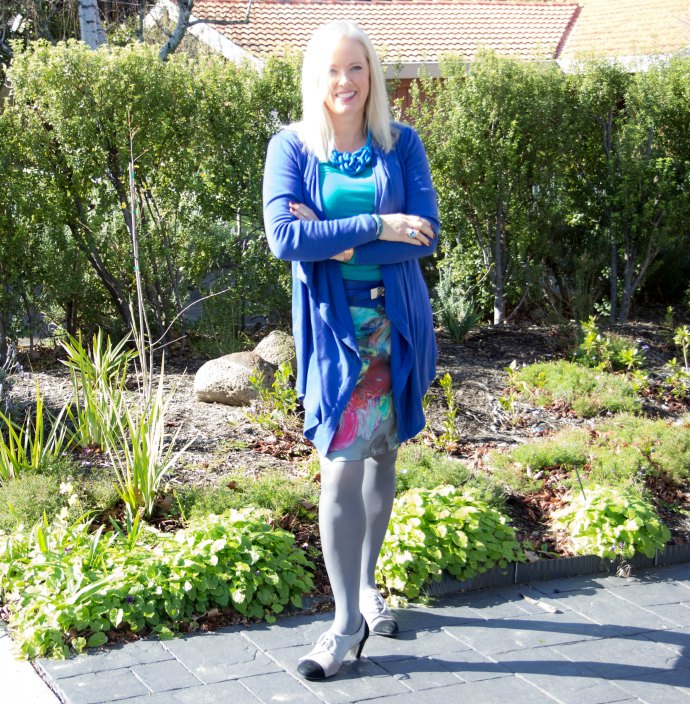
2. Does it fit?
Ok – let’s be frank and realistic. It’s super had to buy clothes that fit perfectly. You are a unique human, clothing manufacture is made to for as many bodies as possible to put the clothes on (not to make them look good!). So of course, you will find it hard to find clothes that are a perfect fit.
That said – does the garment fit well? And if not, can you and will you make the necessary alterations to make it fit well?
If not, leave it behind as it will never rate an 8 or more.
3. Does it flatter my body shape?
Fashions change all the time – as Heidi Klum says time on Project Runway “In fashion, one week you’re in and the next week you’re out”.
And shopping for clothes is like this – one week you’ll find something that flatters your shape, the next week the fashions will have changed and there is nothing that works for you. Don’t feel bad about this – remember in a few more weeks something else will appear.
But what I’ve found is that if it doesn’t flatter your body, you just won’t keep or wear it long. So if you want to play with a fashion trend that isn’t flattering for you – make it a cheap one that you’re happy to dispose of quickly.
Think about the clothes that have been in your wardrobe longest (and are worn the most) – what do they have in common? Most likely they are really flattering on. So why torture yourself with unflattering clothes? Make a decision that you want what works for your body shape, proportions, colouring and variations. This knowledge will empower you and save you a fortune over the years as you stop buying unflattering clothing. Not sure of your shape and want my professional opinion? That too comes as part of my 7 Steps to Style program. Or just take my free Body Shape Quiz here.
4. Does it fit my personality?
This is so key to being able to rate something an 8, 9 or 10/10 as without this key piece of the style puzzle, you’ll find that your choices are hit and miss.
There is a direct correlation between personality and style choices – you can discover your Style Essence (approach to style) with a 16 Style Types Report, and then learn how to turn that essence into style choices with 7 Steps to Style – where you delve deeply into how different personality traits are expressed through clothing, grooming and accessory choices.
Not sure if something fits your personality? Imagine a movie being made of your life. Would the character of you be wearing that outfit? If not – then you’re unlikely to be rating it an 8 or more!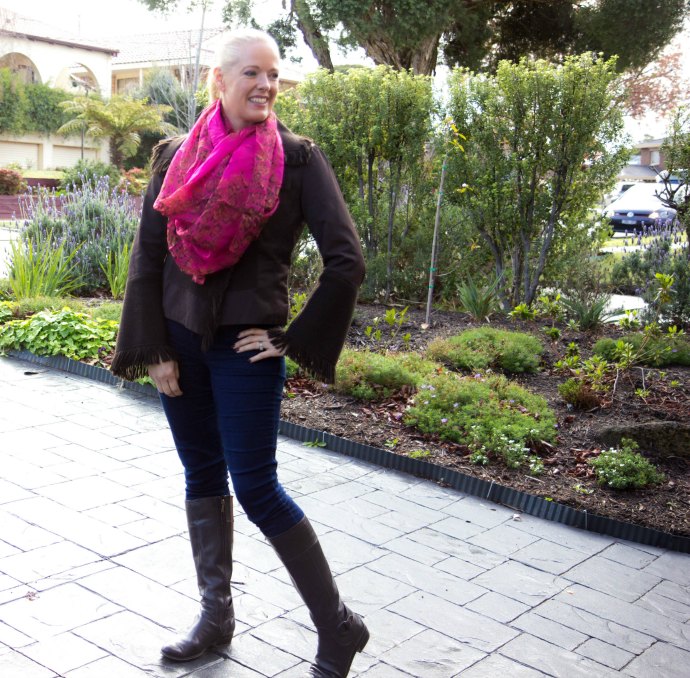
5. Does it fit my lifestyle?
Another super important factor – your clothes must suit your lifestyle. One of the wardrobe issues I see most commonly when doing wardrobe audits is women owning wardrobes for a life they no longer lead or for an imaginary life that isn’t the one they are leading.
Your lifestyle, how you spend your time, what you do each day – what you want to wear that fits each occasion and activity are something only you can figure out. This is why I don’t believe there is any list of “every woman must own these garments” as how you spend your time is different from many others.
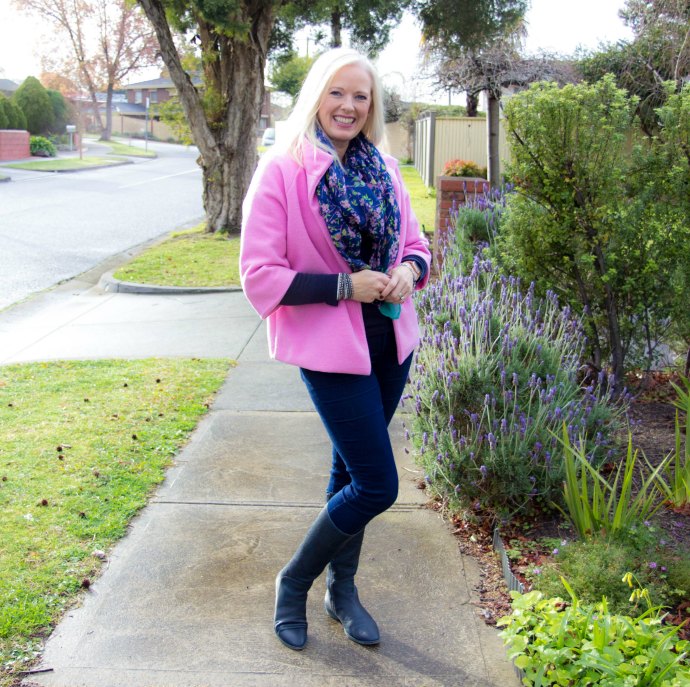 Don’t buy anything that you can’t wear immediately (season permitting) unless you are purposefully shopping for a special event. All other clothes should be something that you’d wear tomorrow!
Don’t buy anything that you can’t wear immediately (season permitting) unless you are purposefully shopping for a special event. All other clothes should be something that you’d wear tomorrow!
6. Is it good quality?
When you’re 20, a wardrobe of clothes that are not made from the finest fabrics with the best construction is completely fine (these are what you may call “junk food clothes” ) as you are still in a stage of growing up and learning who you are. At the age of 40 you’re likely to be wanting to have a wardrobe of clothes that will last a few years and stand the test of time. This means better quality fabrics and good construction.
7. Is it current?
Is it current – yet not a fad about to be dated in the next 2 weeks, not something that has had its used-by-date a little while ago. Currency in fashion says that you are in-line with the times – aware of what is going on around you, and forward-thinking (particularly important in many workplaces these days).
So when choosing a new item – will it last the distance or is it going to be something you have to say goodbye to very soon?
8. Is it comfortable?
This is such an important question to make sure you say “yes” to before you buy. Ask yourself:
- Does it feel good on my body?
- Does it bind?
- Does anything irritate?
- Does the fabric feel good?
- Can I move in it in a way that works with my lifestyle?
If you answer no to any of the above questions, you’ll not be rating the garment an 8 or more!
9. Is it fabulous?
Does it make you feel like the best version of yourself? Does it fit your style recipe? Is it amazing?
I mean really, do you want to add “Ok” or “It’ll do” to your wardrobe? I think not! Leave it behind if it’s not fabulous.
10. Do you need it?
Ask yourself these questions:
- Does it fill a hole in your wardrobe or is it another version of something you already own?
- If it’s another version of something you already own – is it better than what you already have at home? Or is it going to be 2nd best?
- Will you wear it regularly? If not (special occasion wear only an exception), why not? Is it still worth it?
- Does it go with at least 3 other things you already own?
- Can you imagine some fabulous new outfits that you’ll be able to create with this new piece?
11. Is it in my price range?
And last, but certainly not least – can you afford it? Is it in your price range? Is it going to be a good investment and have great cost-per-wear?
Don’t go into debt over clothing that you can’t afford.
Shopping can be a dangerous sport, and there are many tricks retailers do to get you to buy.
By using these criteria to help you make a decision about whether or not what you’re thinking of purchasing is an 8 or more, they will help you to stop and think before you hand over your cash and then assist you in building a wardrobe of fabulous clothes that you love and make you look and feel amazing every single day.
How Many Clothes Do You Need in Your Wardrobe?
It could be a small wardrobe or a large one. Our different personality aspects mean that for some of us a capsule wardrobe is perfect and manageable, and for others, that would feel stifling and boring (read up about which you might be here, in are you about options or procedures).
It could be large or small depending on your lifestyle. How do you spend your time? If you have multiple roles in your life that require very different kinds of clothes, such as more formal work clothes, weekend casual, hobby related clothes, smart casual, formal evening clothes etc. Then this is going to be a larger wardrobe. Versus if you are a stay-at-home mother who sometimes socialises, your wardrobe will be based around casual and smart casual clothes and can easily be smaller, but of course if you have to wash your clothes all the time because your baby makes a mess of them, then you may need more clothes to cope with that!
Your wardrobe could be large or small depending on the climate where you live. It could be smaller if you live somewhere that is temperate and you wear pretty similar clothing all year round, as compared to someone who lives in a climate that requires very different clothes each season because of large temperature variations.
Your location may also influence how much you have in your wardrobe. Do you live in the country and require only a few everyday clothes and the very occasional item for special events, or do you live in a big city where you are regularly seeing clients, going out after work and taking in many events over the weekend?
And of course, how much space do you have to store it so that it’s easily manageable for you?
Each person’s wardrobe needs are different. Only you can figure this out for yourself. You are the one who has to live with your wardrobe and can work out what works for you and just what is manageable for you.
How Long Do We Really Keep Most Clothes?
A study of 620 items disposed of in a 6 month period by 16 households in Norway found that the average lifespan of a garment was 5.4 years but only actively worn for a period of 4 years.
Around 8% of those items disposed of in this study were completely unworn by anyone, and every 5th garment was either never used or only worn a couple of times. Most interestingly this study showed that a high proportion of the “never used” items were gifts or inherited items (this is because with gifts the item may not be your style, taste or the right size). What is fascinating about the inherited and ‘gifted’ items from others is that these were kept much longer than average. In my experience, it’s not because they are being worn, it’s because there is a feeling of guilt for wanting to get rid of an item that was given with love or care. I’ve written about how to handle this guilt here.
A second reason why some clothes don’t get much wear is that they are high-maintenance – and require special care – handwashing or dry cleaning – and many of us see the garment as “work” if we wear it, so choose to wear other clothes instead.
Thirdly, you just can’t see them to wear them – poorly organised wardrobes mean that clothes get lost at the back of draws, on the bottom layer of a hanger with multiple items etc. Can’t see it – won’t wear it!
Firstly, what I learned is that the people who hang on to clothes the longest are:
- More mature
- Low income
- More highly educated
- Have a large wardrobe (of over 200 items and so have a high number of items they have not worn in the past 12 months)
- Conscious shoppers who look to buy clothes that last and look good longer.
What Gets Thrown Out the Most Quickly?
Based on this list – it would be the lower quality clothing, the poorer quality fabrics and fast fashion items that are not made to last.
The research shows that the
- Leggings
- Bras
- Underwear
- Socks
- Casual at home clothing worn every day inside the home and garden
- Casual outside home clothing and clothing for work
are the items that have the shortest lifespan.
You can imagine that underwear/bras/socks/tights – because of their “one wear and wash” nature will wear out much more quickly and therefore the turnover of them is faster.
The casual clothing category is interesting – as we generally invest less in a casual tee to wear at home than we do for a top we wear to work – and those lower quality tees then wear out more quickly, particularly if they are worn in the garden and doing chores where there is a higher chance they will become stained (cooking/cleaning) or torn (gardening).
Interestingly the clothes for outside the home also didn’t have a particularly long lifespan. In my experience going through wardrobes, women tend to purchase fewer “work” clothing and more “fun” clothing – and so each work item gets worn and worn more frequently, thus reducing its lifespan more quickly.
The Clothes We Keep the Longest Are
- Formal Wear
- Sports/Outdoors clothing
- Jackets/Blazers/Coats
What is is about these clothes that make them last longer?
For most of us, formal wear gets worn rarely – maybe a couple of times a year – so it is not getting much wear at all and should last a long long time!
Sports/outdoor clothing – often we invest more in a great outdoor jacket or specific purpose outdoor clothing – thus it being higher quality and made to last.
Now, how about that activewear? I’m not sure – for some it could be like formal wear (rarely worn by those who buy with the intention of doing more exercise but don’t end up doing it) or it could be a better quality fabric and made for all that stretching and bending – so it lasts longer. It’s hard to tell from the data.
Jackets/Coats and Blazers are obvious – they are generally better made, from higher quality fabrics, and made to last. Plus their styles change less quickly than other fashion items, many fall into the Classic category and so turnover on these items is much lower.
Why Do We Get Rid of Clothing Items?
What are the reasons people get rid of their clothing? There are a few reasons I’m aware of from the time spent in wardrobes helping people dispose of what is not working for them:
- Wrong size – no longer fits because of weight loss or gain
- Wrong shape – just doesn’t flatter their body shape/proportions
- Wrong colour – doesn’t make them look healthy, vibrant and alive – as colours that flatter you should
- Wrong style – doesn’t fit their personality or personal style – very often these items are bought because the owner is bored with their current wardrobe so they buy ‘different’ but sadly it’s the wrong kind of different (and they don’t know how to buy the right kind of different for them – something you learn in my 7 Steps to Style)
- Not fit for purpose – bought it for a reason but it didn’t really work for the purpose you bought it for
- Not your lifestyle – I’ve seen this many times – purchasing an item of clothing for an imagined or hoped for life that doesn’t exist in your real world, or a changing lifestyle – work to retirement or child-rearing, change of location and climate.
- Out of fashion – find out how you can figure this out for yourself here.
- Worn out – pilled, stained, torn, saggy, baggy etc.
Middle-aged (adults over 51) kept their clothing for longer before disposing of it when it was 10 years old. Many of these 10-year-old items had not been worn for some years but had been kept for some time before disposal (letting go can be hard for many).
While teenagers kept theirs for only 3 years at most (not unexpectedly, as this is both a period of changing body shapes and size, but also a time of self-discovery and trying out different fashions and following fashion fads, also garments made for this demographic are generally of poorer quality).
What was interesting, was that if clothing was going to be disposed of and it was still in good condition – so it would be either sold or donated – it was let go of more quickly at around 3 years after purchase (letting others get wear out of it while still in fashion) than if it was going to be thrown in the bin (then it was kept for 1.6 years longer).
So if you don’t want to have clothes in your wardrobe you don’t wear – say no to the “gifts” that really are a burden not a gift and learn more about what suits you so you can make informed and conscious shopping choices.
4 Easy Tests To Know if You Should Keep it Or Let it Go
- Test for Fading -Take the clothes out of your wardrobe that you think may be getting old. Take them into a space that has great lighting. Look inside the seams or inside a pocket and see if there is a difference between the colour there and the colour on the outside. This is a good way to see how much fading the garment has had.
- Thrift Shop Test – Now run the garment by the “Thrift Shop Test”. Imagine that you are in a thrift shop. Would this garment pass your quality test for purchase? If it was someone else’s ‘old thing’ would you still want it?
- Currency Test – Go online (or to the stores) and see if you could replace it with a very similar item. This will tell you if the shape and style is still current, or not. If you can find very similar garments in store, then it’s still current. If there is nothing like it in the chain stores (and it’s not a really creative or unique item to begin with) then maybe it’s a fashion of another era.
- Out of sight, out of mind Test – Put your clothes in a box. Label it and store it somewhere in your house where you can’t see it (not in your closet). If you haven’t look for the clothes after some time, it’s probably time to let those go.
These three quick tests will help you evaluate if that old favourite should stay or leave your wardrobe forever.
How to Assess Your Wardrobe Needs
1. Climate. Consider your climate – do you need separate summer and winter wardrobes plus items for those in between seasons?
2. Personality. Do you get bored easily liking change? Do you prefer more of a uniform approach to dressing? Knowing what you like really helps you decide what you need in your wardrobe.
3. Lifestyle . Note down what your average weeks look like and all the things you do. Then think about clothing requirements for each of these activities and how much time is spent in each dressing style (such as formal business, relaxed business, smart casual, casual, exercise, special event wear etc.). Relate the percentages of time spent in each to your the volume of each in your wardrobe. Remember, even though you may only spend 4 hours a week doing exercise, you will most likely need to have multiple exercise outfits as they need to be washed after each short session.
4. Inventory. You could take a complete inventory of your wardrobe – you can use one of the wardrobe apps on your smartphone, or you can turn around all the hangers in your wardrobe and only turn them back when you’ve worn an item (when it comes back from the wash) and after a year you’ll see just what you’ve been wearing and what hasn’t been worn. Photograph your outfits and keep all the pics in an album, then you can see which items get worn and which don’t, which will help you understand more about what you wear.
5. Plan your outfits. Download my Weekly Outfit Planner here and then start planning outfits for the coming weeks. You will start to see which garments get lots of use, where you are lacking in clothing and what you prefer to wear. You will need to do this over each season to ensure that you’re not ignoring clothes because the weather doesn’t allow for wear.
6. Try a wardrobe capsule challenge. Create a mix and match wardrobe of around 30 garments and ignore all other clothes in your wardrobe. Wear them for the next 2-3 months and see how you feel. Are you feeling bored and stifled by the lack of clothes or do you feel more free? This is another way to discover whether you need more options or prefer a more uniform style of dressing.
7. Wear everything. This is the opposite of a capsule challenge. Instead of limi
ting your choices, challenge yourself to wear everything in your wardrobe over the coming 6 months. Turn all your hangers backwards and try each day to reach for something with a backwards hanger (as in step 4 turn the hangers to face forwards when you’ve worn an item). Photograph your outfits and then see if you like how they appear on you. You may want to make alterations, you may discover a new outfit, or you may find that you’re just not a “dress person” or a “pants person” or whatever it is that those garments that languish in your cupboard are. Doing my Evolve Your Style challenge can give you lots of ideas to try as you are working through your wardrobe.

8. Clear out the clutter. Once you’ve worked through what you do and don’t need, what you do and don’t like, what does and doesn’t work (and doing a program like 7 Steps to Style where you discover the colours, shapes and styles of clothes that suit you can really help you in this), get rid of the stuff that doesn’t make you feel good. Ask yourself when you put on an outfit “Out of 10, how does this make me feel?” If you can only say “this outfit is a 5” (or less), then try and understand why. Fit? Fabric? Quality? Personality? Colour? etc (read this post about creating your perfect wardrobe). If it can’t be improved, then let it go. As they say, if you can’t see the woods for the trees, you need to clear everything out to create a better functioning wardrobe so you can see what you really do have that works. Without clearing out the clutter your wardrobe will never be manageable.
Once you’ve got a better handle on your personal needs, you can make a better assessment of what is the right kind of number of garments for your wardrobe, what you enjoy wearing (so say you’ve got a bunch of dresses but you never wear them … then let them go, or play around and style them in a way that does fit with your personality, lifestyle, climate and occasion needs) will always come into this equation too.
Don’t Forget the Accessories
I don’t consider accessories to be part of your capsule. They are the icing on your cake and allow you to really make best use of your capsule by changing the way that each outfit looks so it feels as if you are wearing something different.
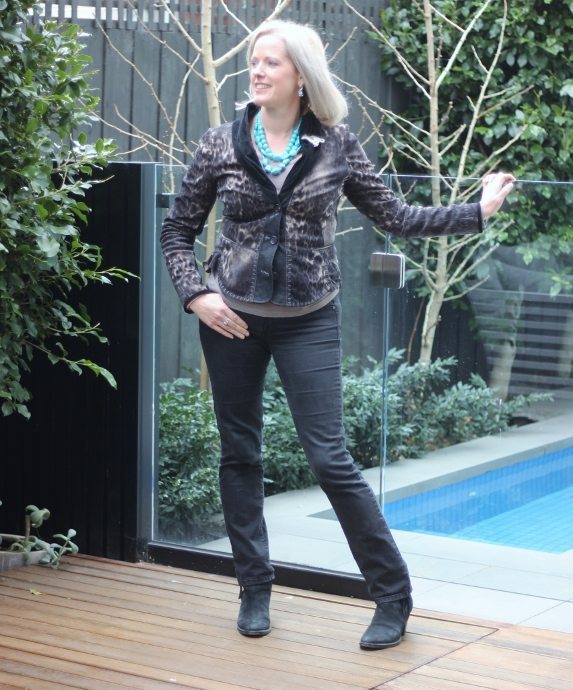
Accessories can add colour and interest to your wardrobe capsule
Having a range of scarves and necklaces that you can put with your more basic items (and colours) in different colours and levels of refinement will help you really get the most value from your capsule. Your accessories can also really assist you in making your capsule more versatile, so you can dress it up or down more easily.
Don’t limit yourself to just a few accessories. Look for a range of colours and styles to expand the colour scheme within your capsule. There is no reason why every accessory has to go with every outfit. Wearing a red scarf one day with your white top, then a blue necklace another, and then a pink and yellow scarf will make it look like you have way more clothes than you really do.
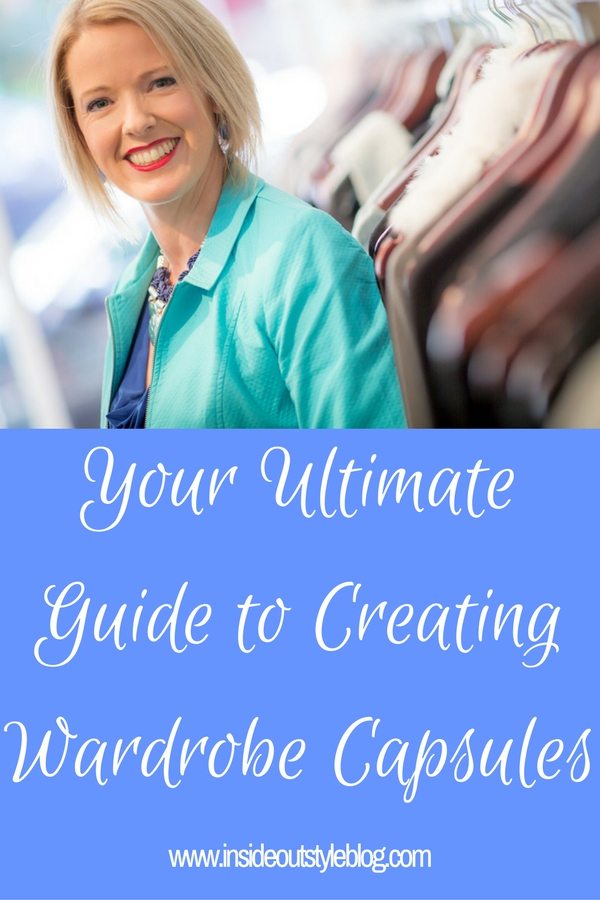



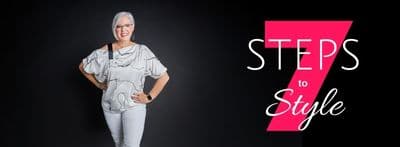


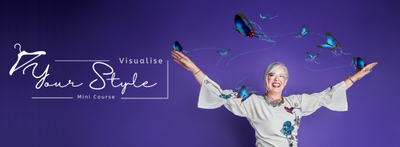
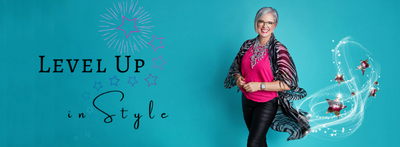
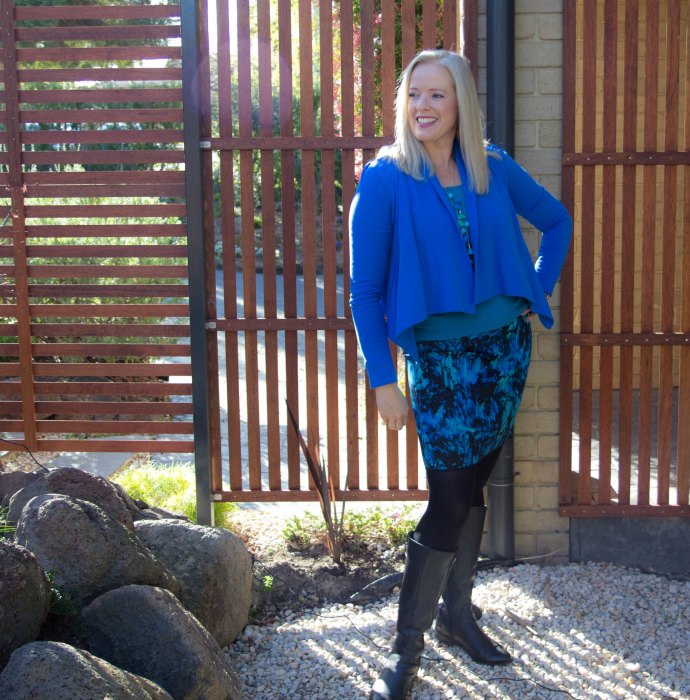
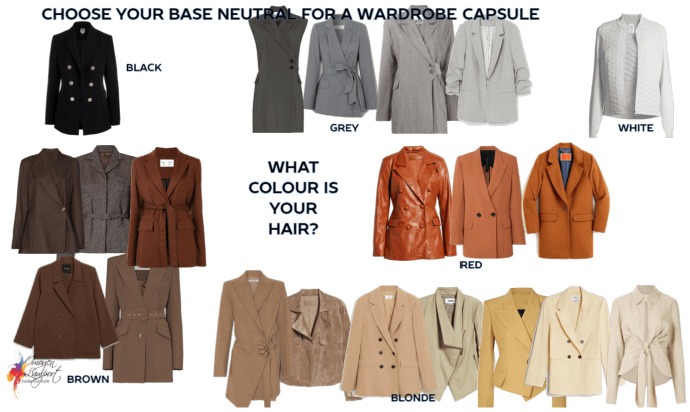
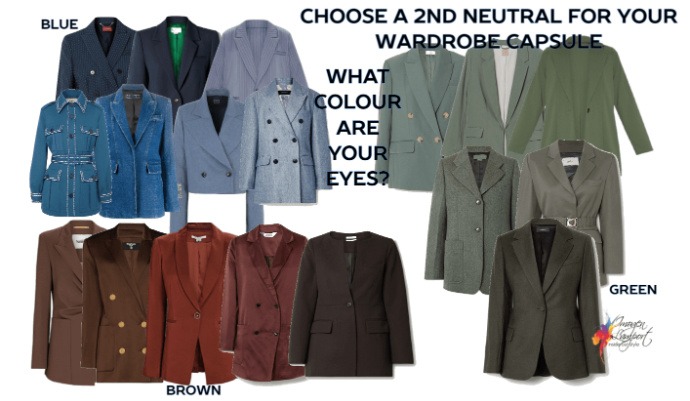
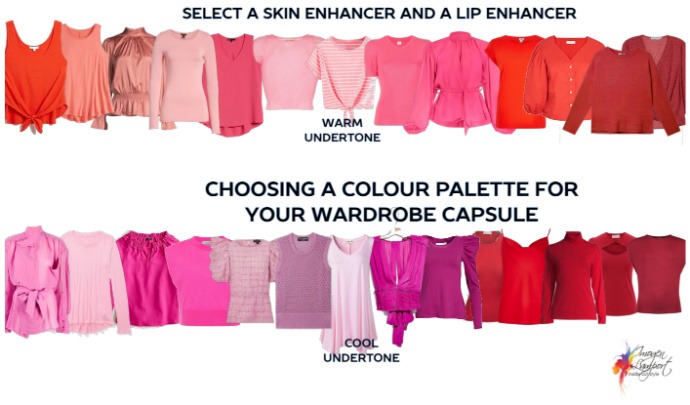

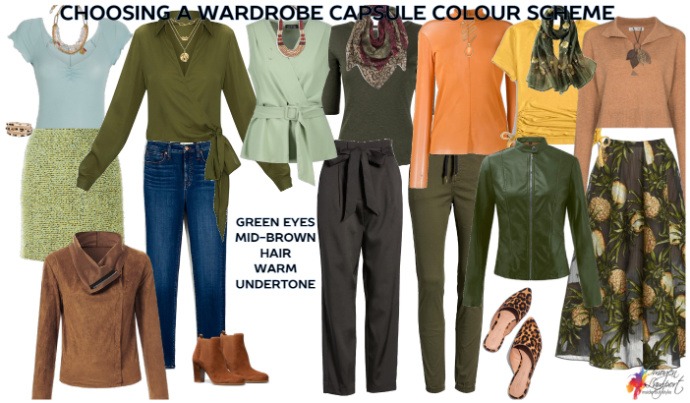
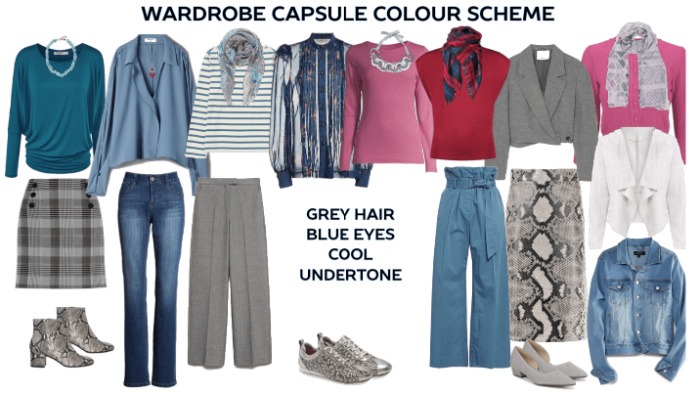

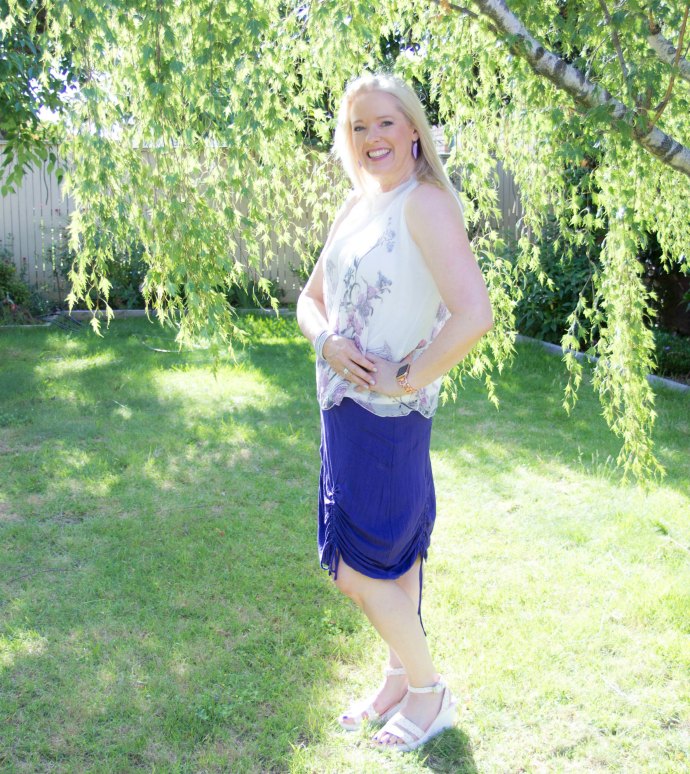

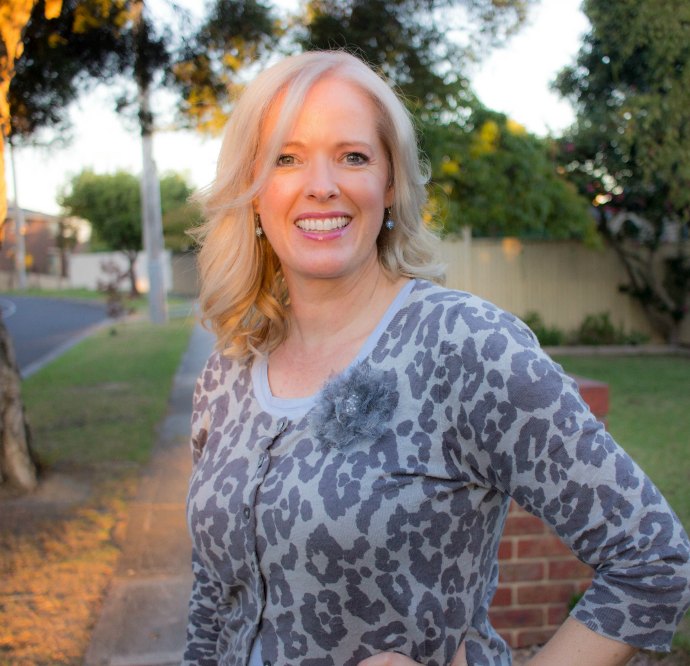
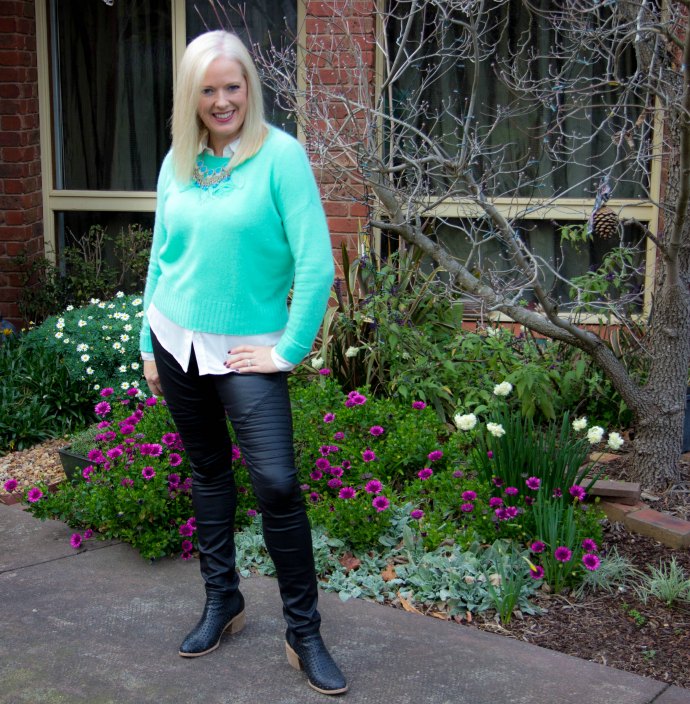
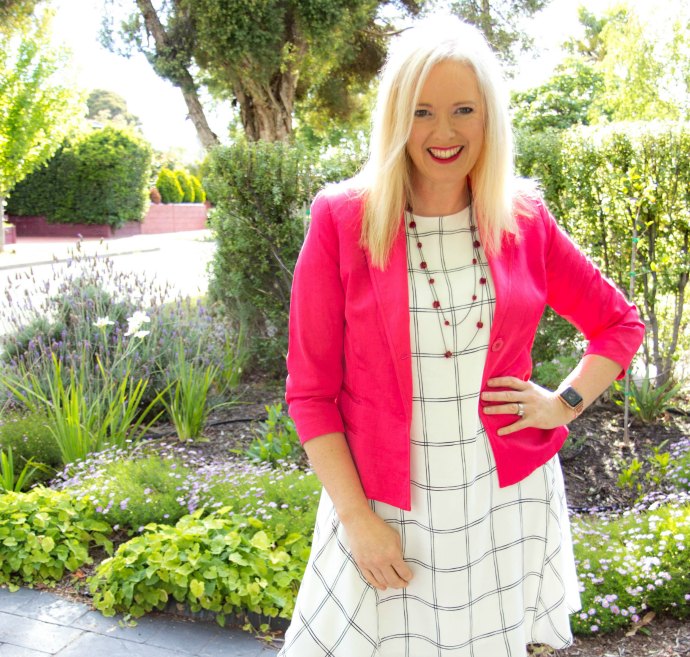






Hi Imogen, I was just thinking a very similar thing. Lots of the capsules on Pintrest are just groups of nice looking clothes. But your insideoutsyleblog is a source of truth. Great post.Thx Donna
Thanks Donna! So often I see a supposed capsule that is a few garments – mixed with lots of other things – not in the capsule.
I too have found many of the blogs not very useful. I suppose I’ve been doing “capsule wardrobes” for years – especially for work and your advice is helpful. These days I tend to sew whole capsules as I find it more than difficult to find ready made stuff that I like, is good enough quality, or can afford, in shops. One thing I do note though. While I agree that tops should go with bottoms, and colour range or ranges work together, it is possible to add a dress in a different colourway, as long as said dress works with shoes, jackets, coats etc. It doesn’t matter if it doesn’t go with trousers/skirts/blouses/tops as you won’t be wearing it with them. I found this stopped me getting bored (what colour(s) I fancy wearing depends on my mood) when I travelled for work, with a coordinated set of garments and an extra, such as dress (one or two piece) that was different. I know total coordination looks great in a photo of the wardrobe but is less useful in real life.
Absolutely – a dress just has to go with your outer layers – not everything else. It’s an additional piece that allows for some extra variation.
Out of financial necessity, I used the concepts of the capsule wardrobe when I began my professional career nearly four decades ago before I knew it was a thing or had a name.
I was lucky enough to have a mother-in-law who sewed for me. I found a simple pattern for a straight skirt and she made multiples in my base colors as well as black and white check and plaid. The same with a jacket pattern, also a shell top pattern in solid colors.
I could walk into my closet and randomly pick a skirt or pant, a top, and jacket and get dressed without even thinking about it. Grab a belt, shoes, and jewelry and I was good to go.
It simplified my morning routine as a mother, wife, and psychotherapist. I periodically added accent colors with new shells or tops. Many years later, I realized I could do the same for evening and Holiday wear.
I wish there had been someone to help me figure all this out. I’m so glad you’re helping other women to do it. What you are doing helps take the confusion out of getting dressed and looking our best every day so we can focus on the things and people we love.
Keep up the good work!
How would you approach capsules in between seasons ?
Are there useful trans seasonal items for spring to summer capsules (or Autumn to winter) ? Thinking of travel friendly, casual clothing capsules.